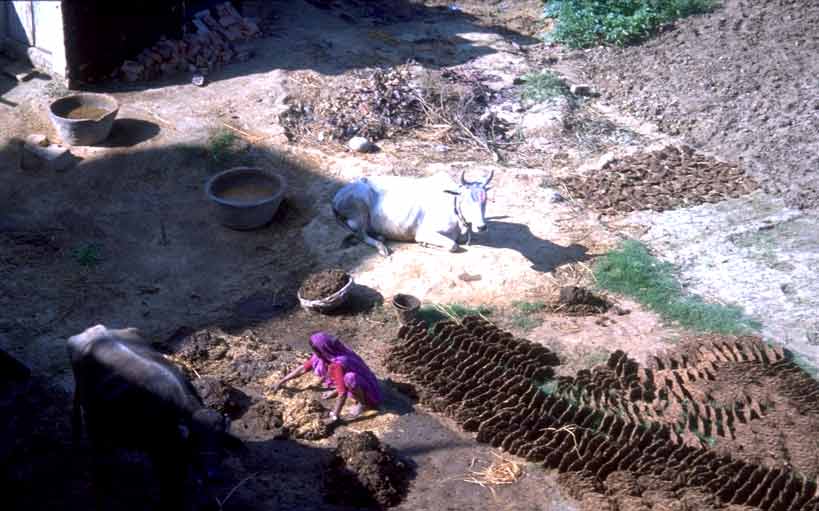

From the roof of the Khenpo's monastery, looking down into the yard of a neighbor. This woman collects cow dung off the streets, carries it home in a basket, mixes it with straw and then forms it up to dry in the sun. These patties are stored and used for cooking fuel. Notice the vermillion streak, a mark of respect, on the forehead of the white cow. To care for a cow is considered a sacred duty. India's cattle excrete more than 700 million tons of manure annually, half being used as fertilizer to maintain the soil. The rest is burned to provide heat for cooking. Nine out of ten rural households use it for fuel. No other country of comparable size supports more than a fraction of India's population density although seventy five percent of the population lives in rural communities of less than a thousand people. Rich alluvial soil from the Himalayas has supported widespread agriculture for over 5000 years. Almost sixty percent of the country is arable or in permanent cropland. On the other hand, deforestation is one of India's most serious environmental problems, with less than 11% of the original forest cover remaining. The Buddha advised his students to plant a tree every year.
TURTLE HILL© 2000